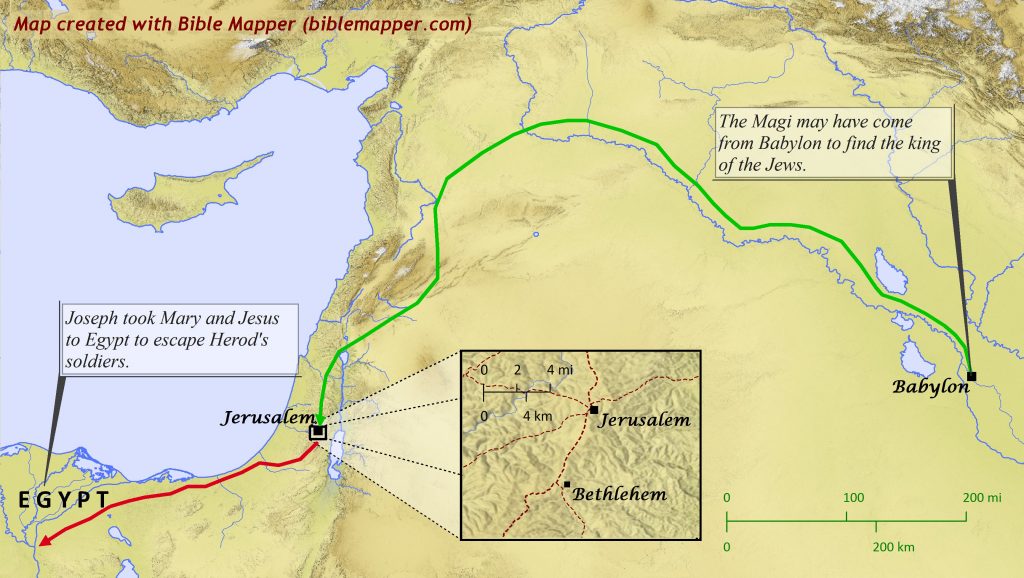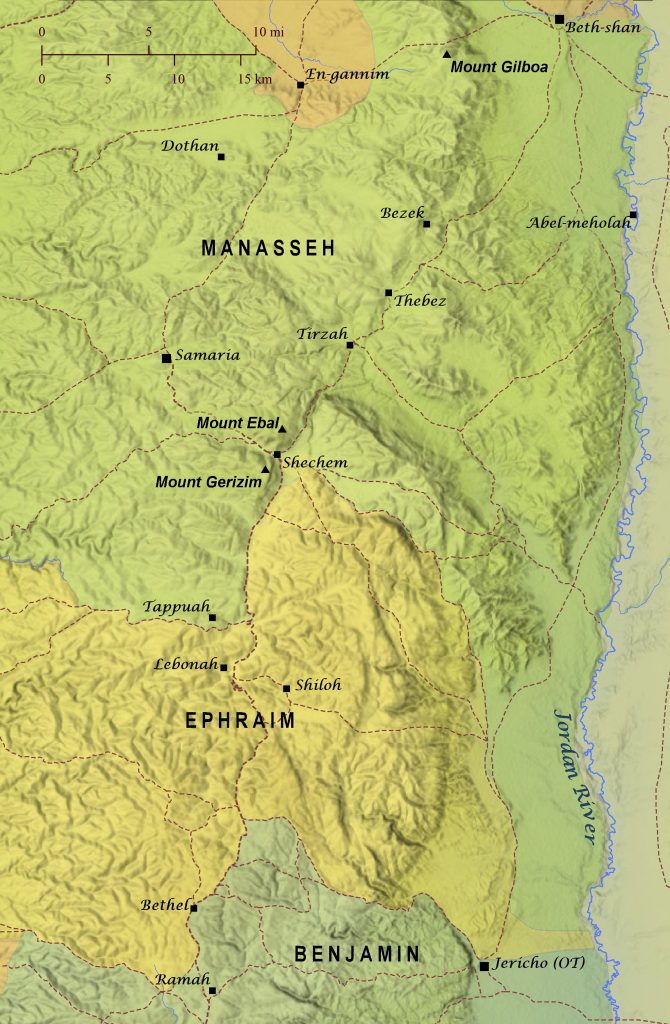Perhaps as much as two years after Jesus’ birth astrologers called Magi came from the East to worship the newborn king of the Jews, for they had seen a star in the heavens that indicated he had been born, and it directed them to Jerusalem. They asked King Herod where the child was, and he asked the leading priests and teachers of the law, who correctly pointed them to Bethlehem. So the Magi traveled five miles south to Bethlehem, and the star directed them to the house where Jesus and his family lived. There they worshiped Jesus and gave him gifts of gold, frankincense, and myrrh. Then, being warned in a dream not to go back to Herod, the Magi returned to their homeland by a different route. An angel then warned Joseph in a dream to flee to Egypt with his family to escape Herod’s wicked plan to kill the newborn king.





